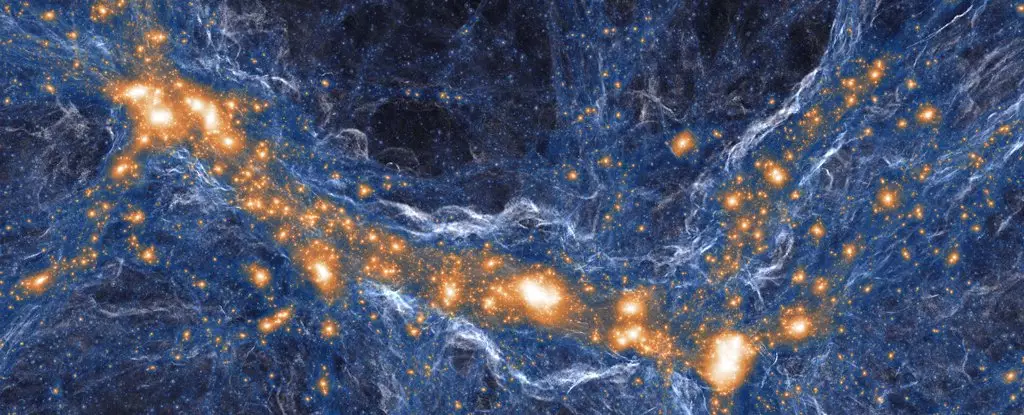

Dark matter, a term that has puzzled scientists for decades, derives its name not from the notion of being shadowy or elusive but rather from its intrinsic inability to interact with light. Unlike ordinary matter, which can absorb, emit, and scatter light due to the electromagnetic forces exerted by charged particles within atoms, dark matter is characterized by its lack of electromagnetic interaction. This peculiar absence of engagement with light results in dark matter being invisible to traditional observational techniques, prompting scientists to search for alternative means of understanding its properties and behaviors.
Regular matter, such as the gas and dust that form detailed structures in the universe, can be observed directly through the light it interacts with. For instance, when we observe the colorful molecular clouds against the backdrop of stars in the Milky Way, we are witnessing light interacting with ordinary matter, creating a vivid display. In contrast, dark matter possesses no electric charge, rendering it impervious to the electromagnetic forces that allow light to bounce off or pass through other forms of matter. Consequently, when these two types of matter come into contact, they simply coexist without any observable effects.
The primary way scientists have inferred the existence of dark matter has been through its gravitational influence on celestial bodies. Observations reveal that galaxies do not behave according to the mass we can see; they appear to be held together by an unseen force resulting from the gravitational pull of dark matter. This gravitational grip manifests in various cosmic phenomena, such as the formation of superclusters where galaxies congregate due to the attractive embrace of dark matter.
One fascinating aspect of dark matter is how its presence can influence light through gravitational lensing. When light from distant stars or galaxies travels through regions dense with dark matter, the gravitational field can distort and bend that light. This bending effect becomes an essential tool for astronomers, allowing them to map the distribution of dark matter in the universe. However, a lingering question remains: is gravity the sole interaction between dark matter and regular matter?
Emerging research into ultrafaint dwarf galaxies (UFDs)—satellite galaxies orbiting the Milky Way that appear anomalously low in stellar count—may provide critical insights into this question. Because UFDs contain significantly more dark matter than visible stars, they serve as ideal subjects for testing the hypothetical interactions between dark and regular matter. If dark and ordinary matter interact solely through gravity, one would anticipate a predictable distribution of stars, characterized by a denser concentration at the center and a gradual decline towards the edges.
However, if these two forms of matter engage in additional interactions, the expected stellar distribution could deviate markedly from this pattern. Researchers utilized advanced computer simulations to model both scenarios, comparing them against observed data from six distinct UFDs. The results indicated that the interacting model—where dark and regular matter influence each other in ways beyond gravity—offered a better fit for the observed stellar distributions.
The implications of these findings suggest a paradigm shift in our understanding of dark matter. If the traditional models, which posit that dark matter only interacts gravitationally, are proven to be insufficient, then researchers have a compelling avenue toward unraveling one of the universe’s greatest mysteries. This new perspective may lead to innovative methods for directly detecting dark matter, propelling scientific inquiry into previously undiscovered realms.
As ongoing research explores these non-gravitational interactions, we edge closer to illuminating the dark matter puzzle. While we have yet to elucidate the precise nature of these interactions, the mere acknowledgement of their existence reshapes our comprehension of the cosmos. In the grand pursuit of understanding the universe, acknowledging and investigating dark matter’s hidden behaviors may ultimately light the way to revelations that could redefine our understanding of existence itself.
Despite the term "rare," rare earth metals (REMs) are not nearly as scarce as their…
A collaboration led by Rutgers University-New Brunswick has initiated a paradigm shift in our understanding…
Natural gas leaks are a growing concern in both urban and rural settings, with potential…
Recent groundbreaking research at the University of Vienna has unveiled a novel interplay of forces…
In recent years, perovskites have garnered significant attention in the fields of materials science and…
For decades, astronomers have probed the depths of the Milky Way, grappling with two perplexing…
This website uses cookies.